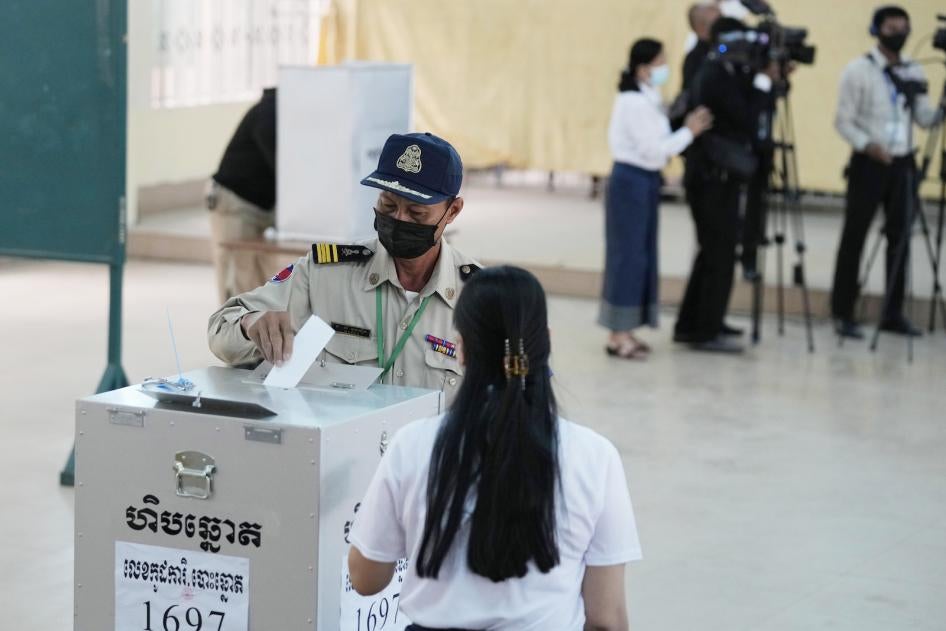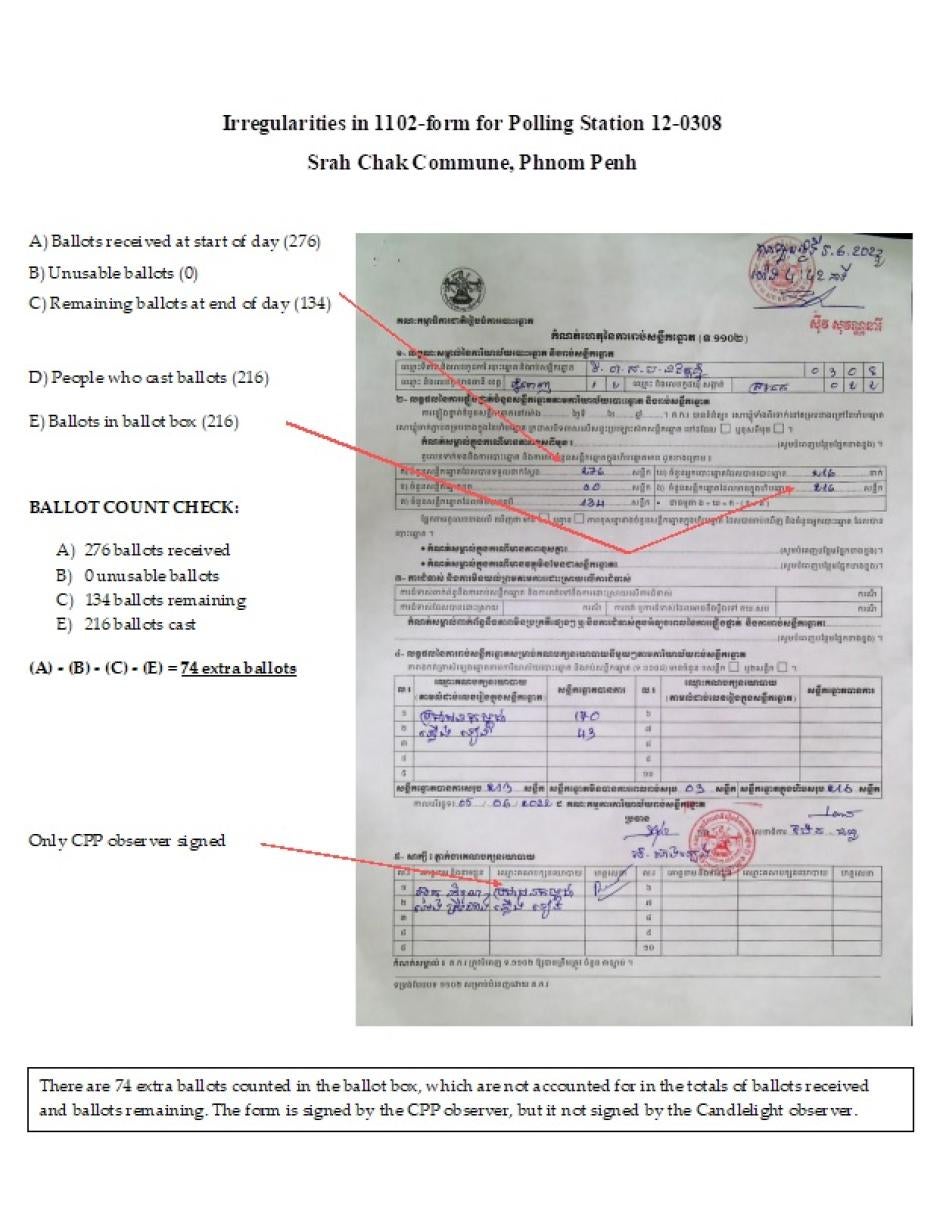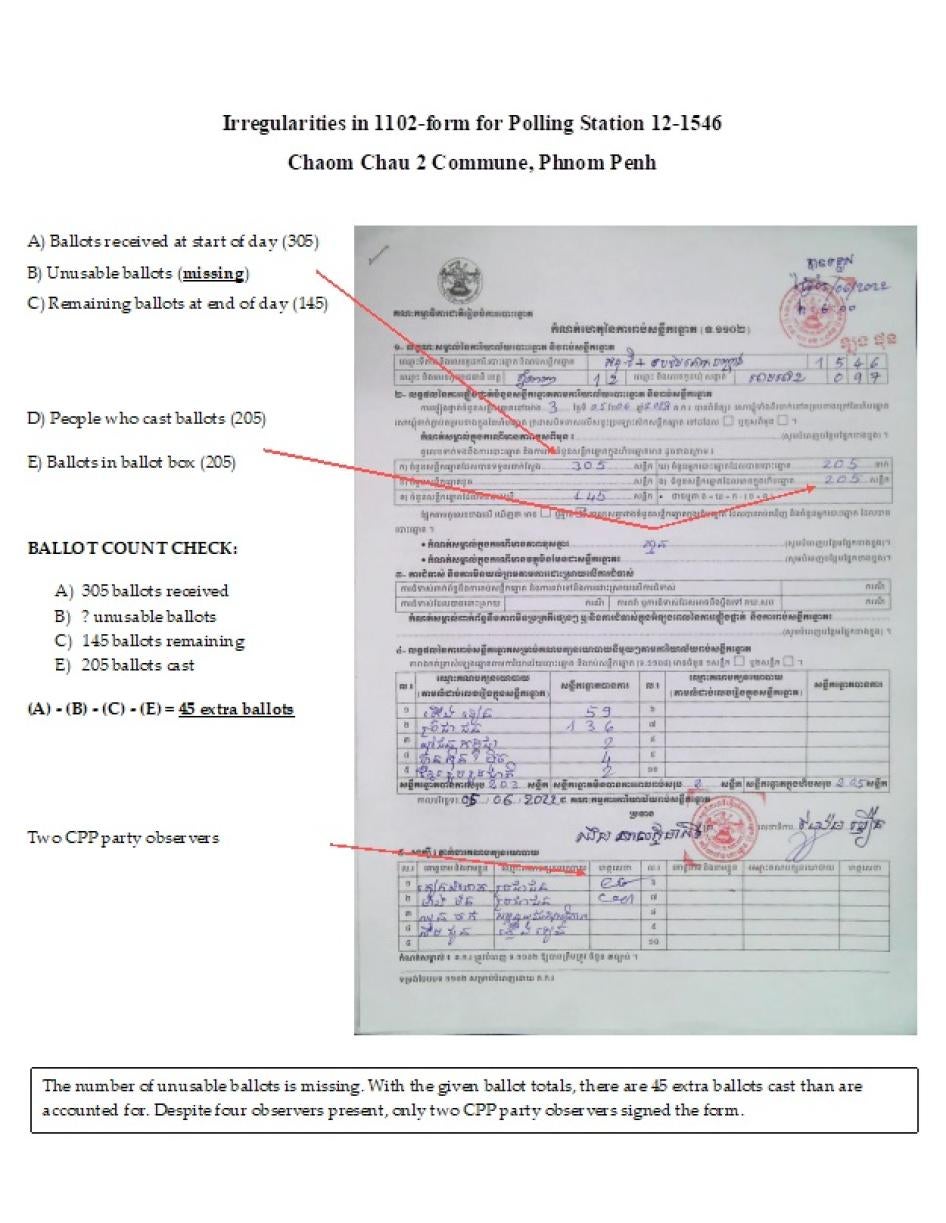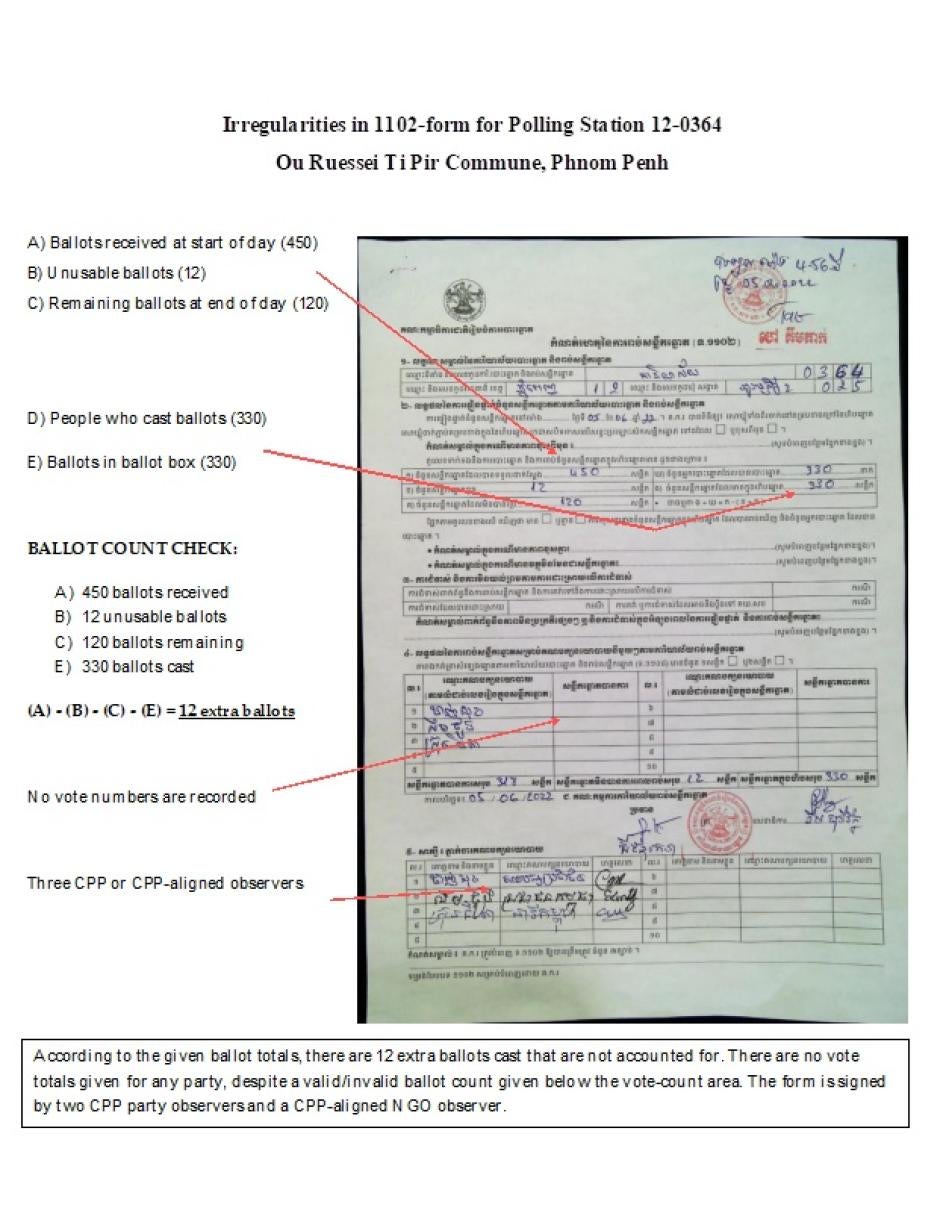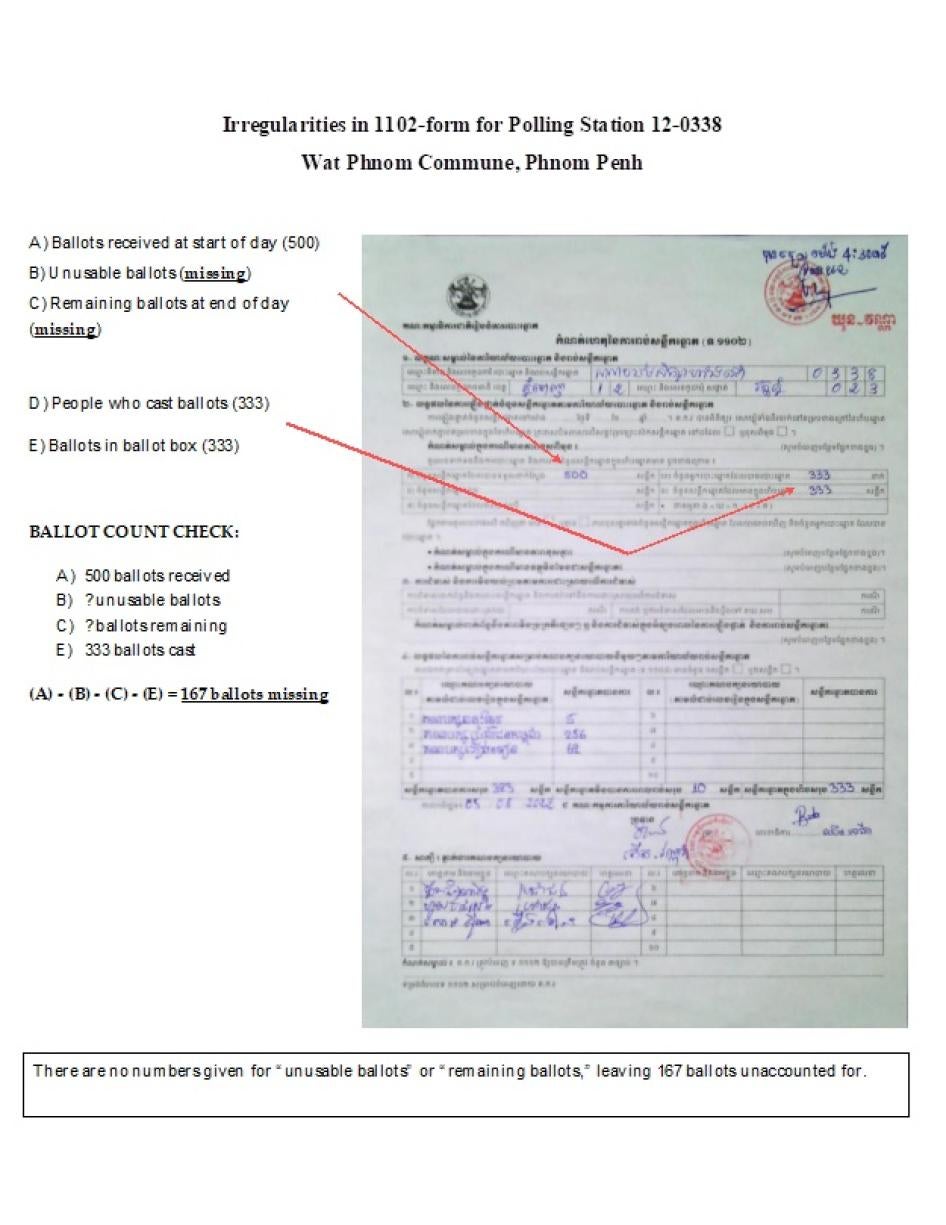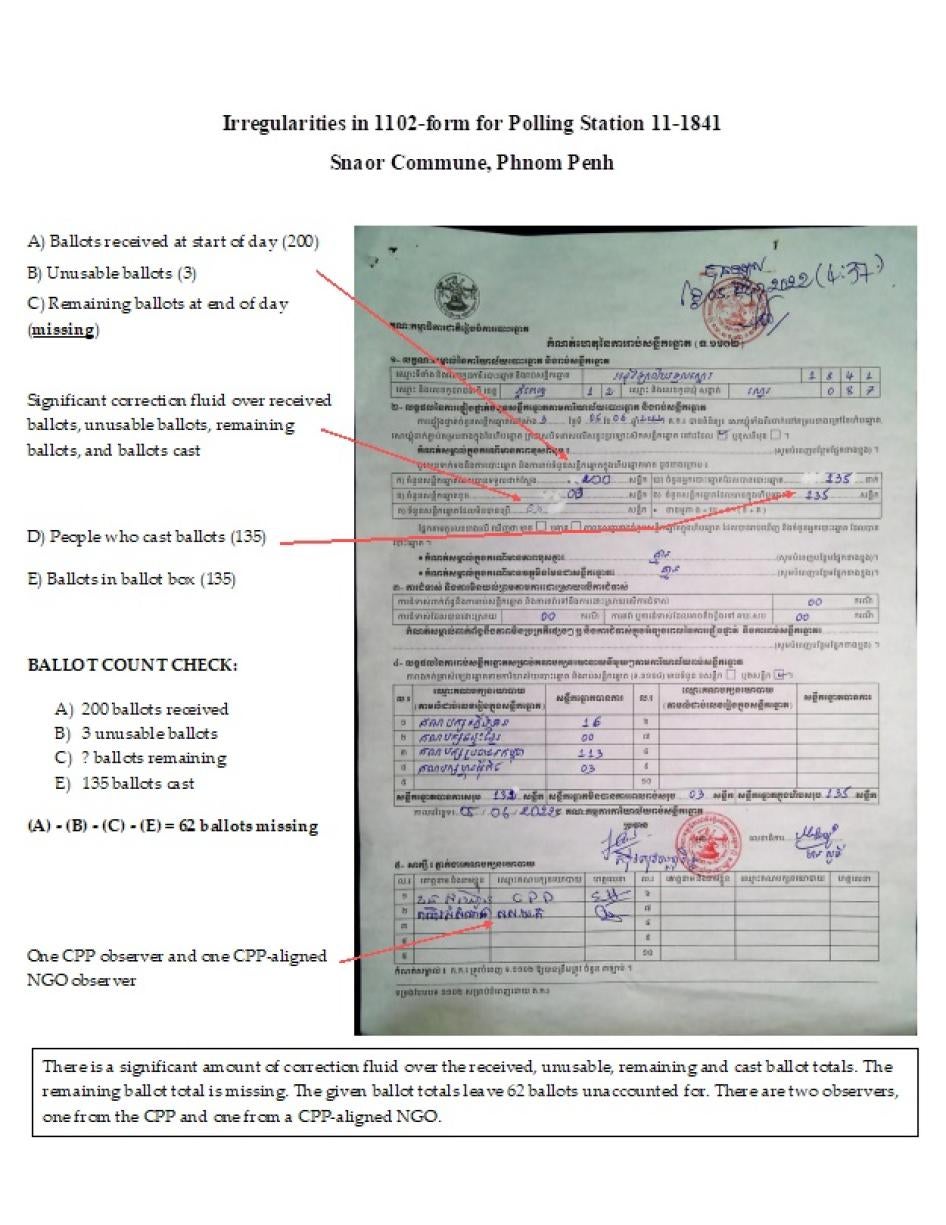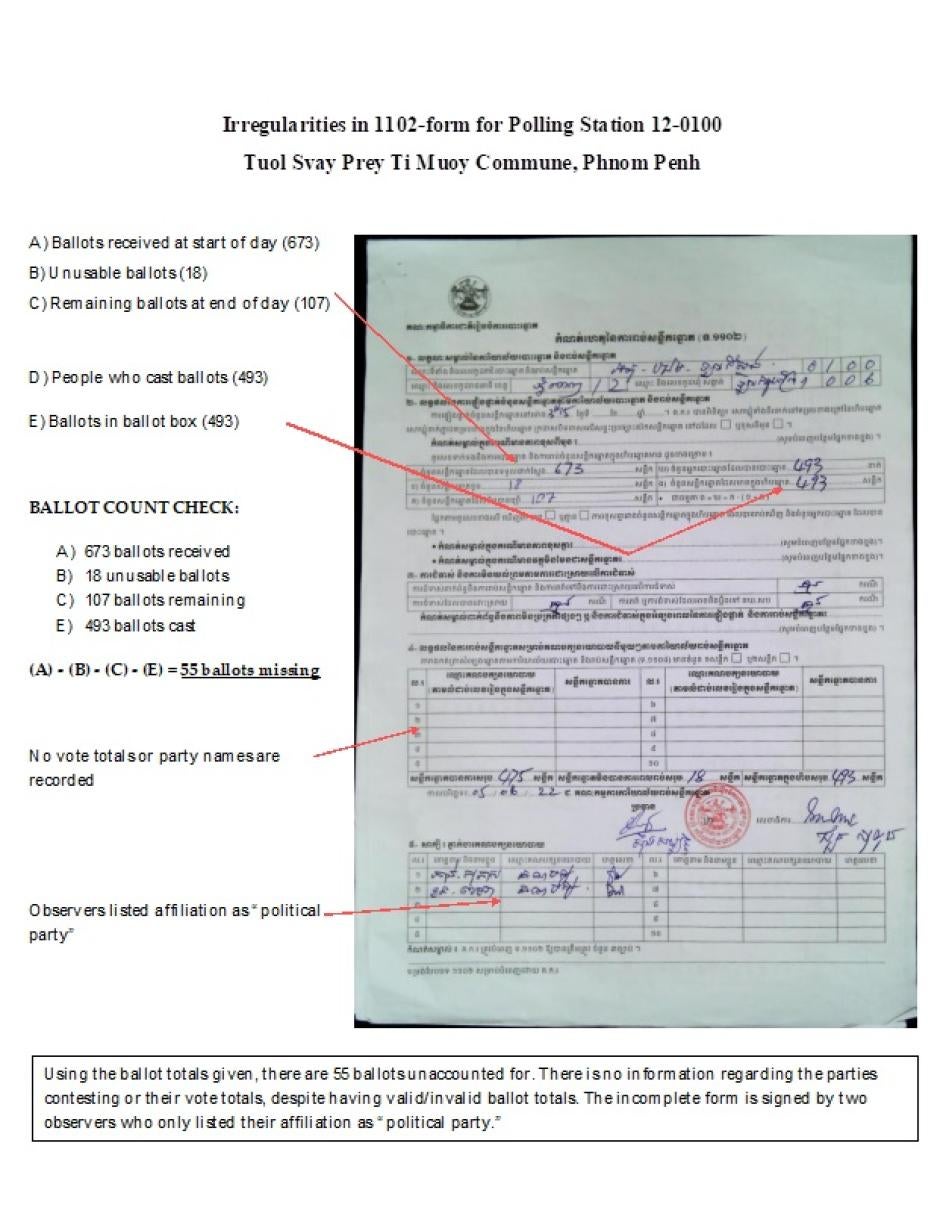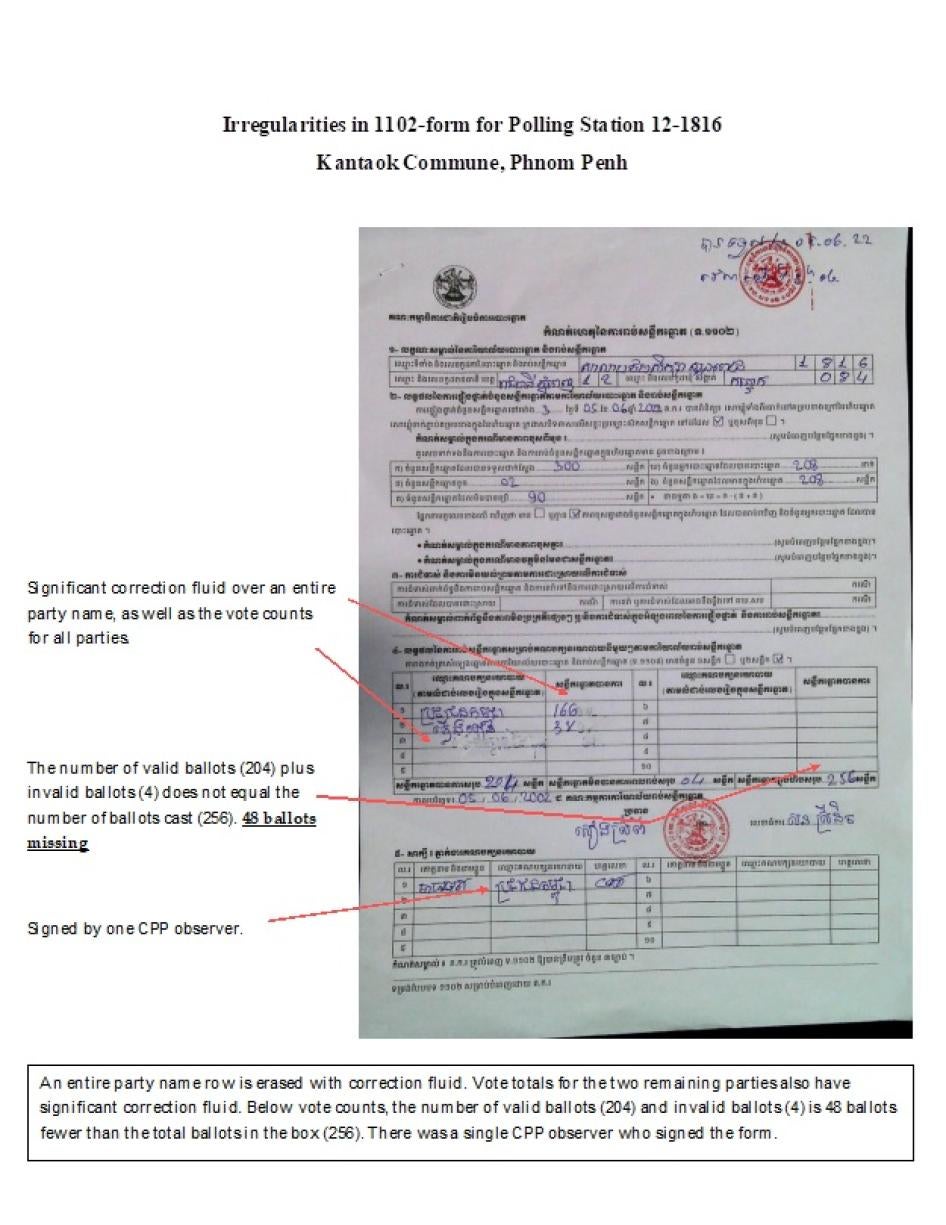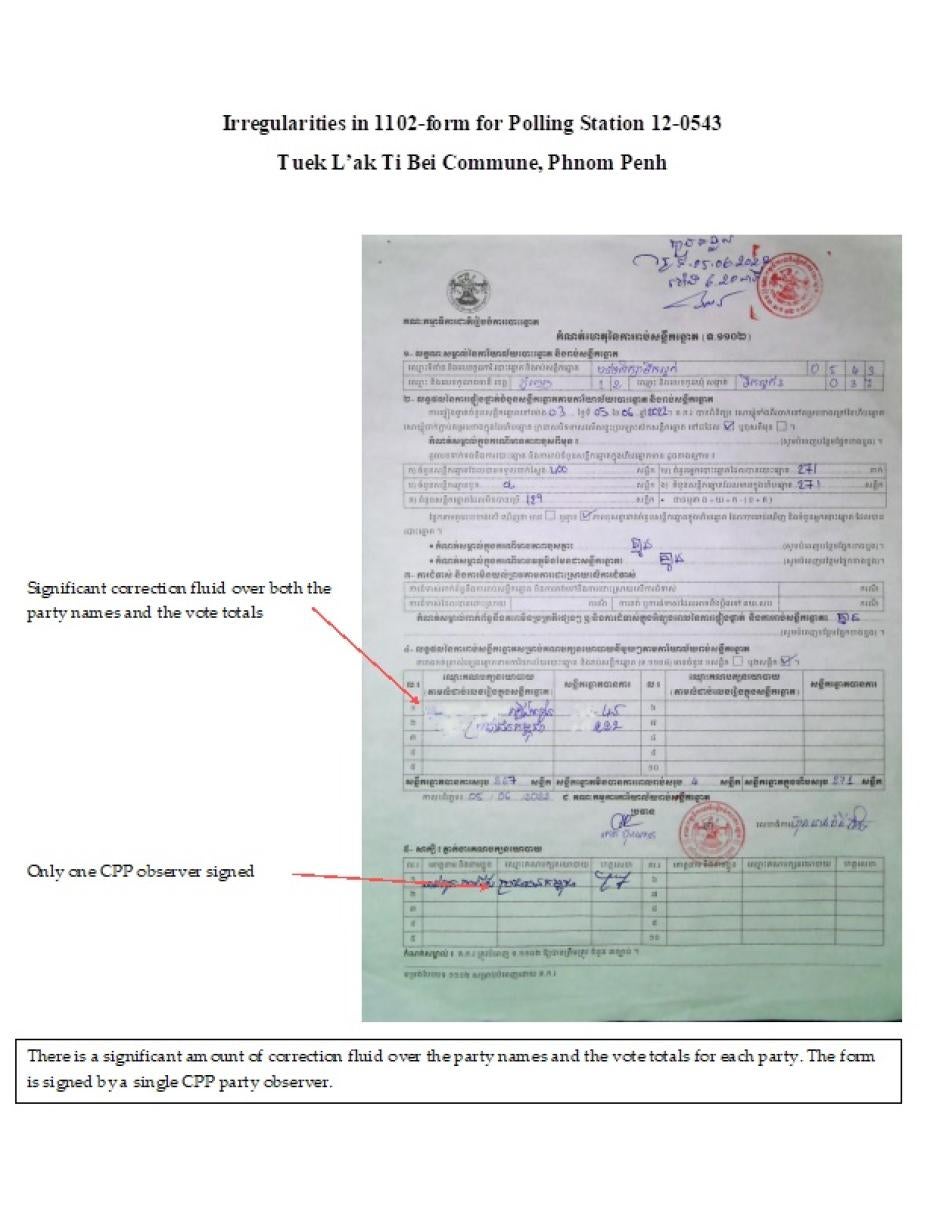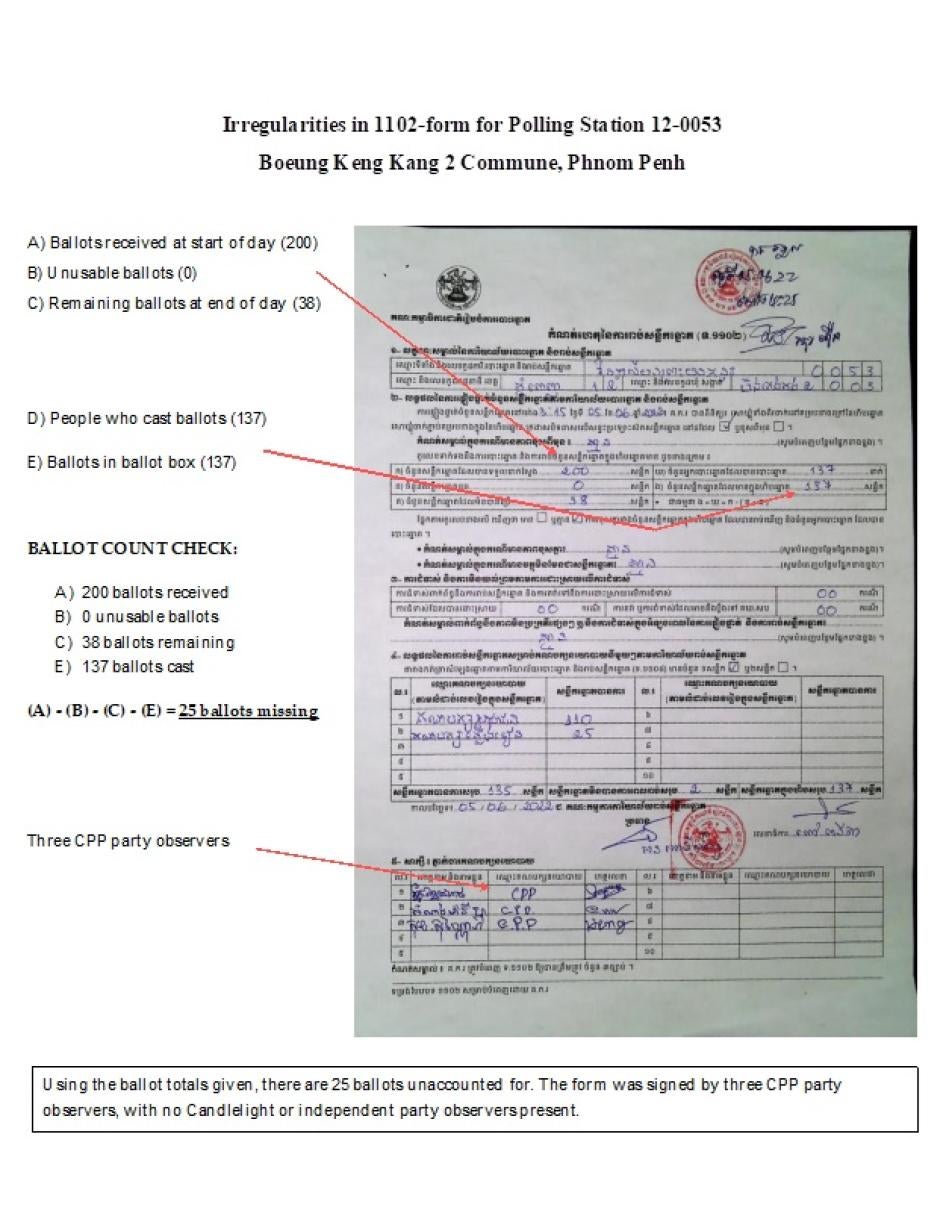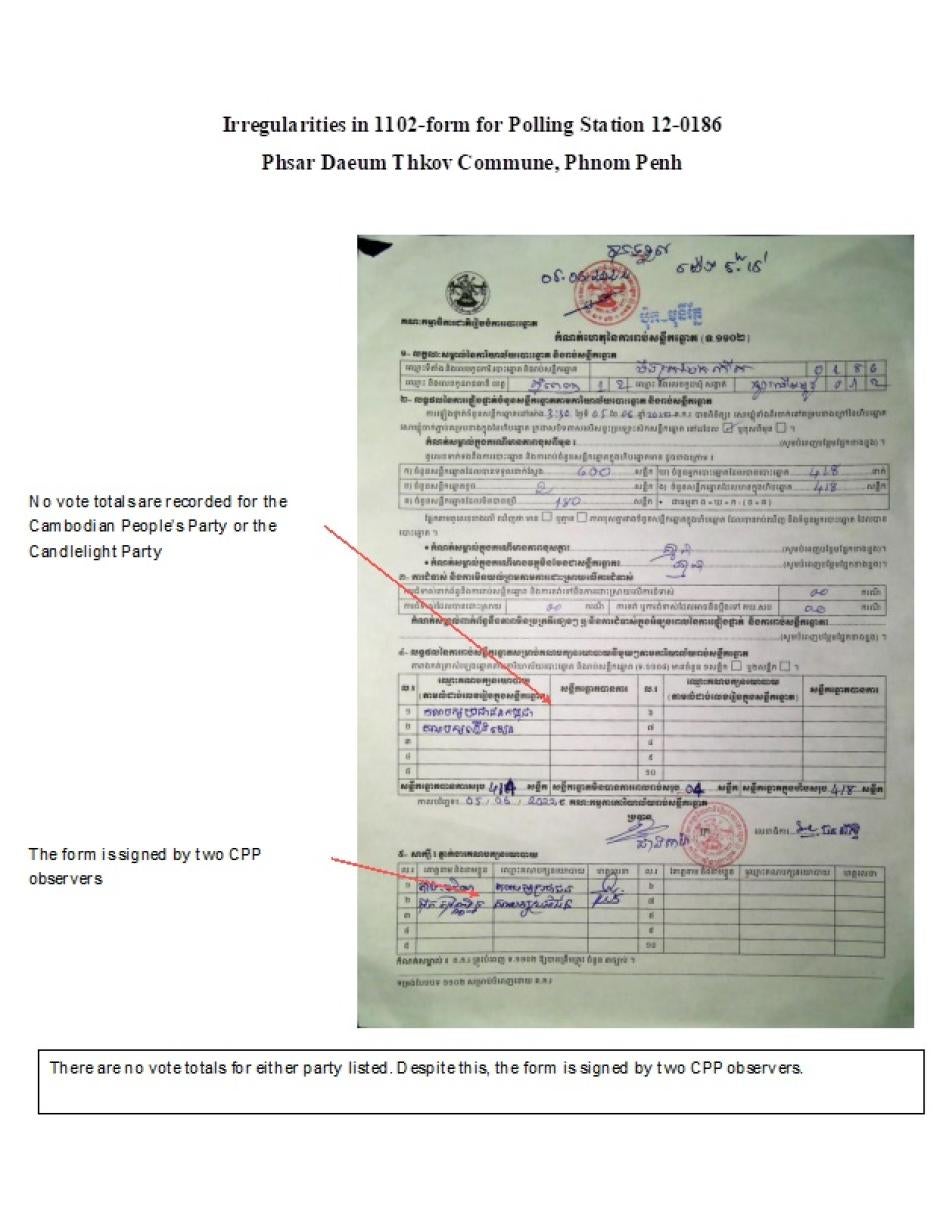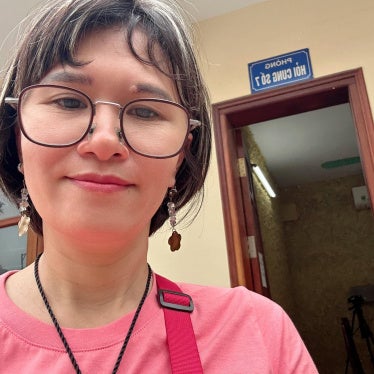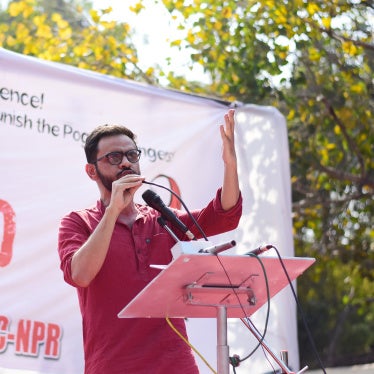(Bangkok) – Cambodia commune election results in 2022 showed numerous and significant irregularities that raise concerns for the July 23, 2023 national elections, Human Rights Watch said today. A systematic analysis of ballot forms in Phnom Penh suggests that election fraud and vote tampering may have occurred, and that ballots across the capital were not properly counted and reported.
The National Election Committee (NEC) should promptly adopt measures that would ensure the fair tabulation of votes in the upcoming national election. The committee did not respond to questions that Human Rights Watch submitted on June 5, 2023, regarding alleged irregularities.
“Serious allegations of vote tampering, fraud, and improper counting of votes during the 2022 commune elections call into question the credibility of Cambodia’s National Election Committee,” said Phil Robertson, deputy Asia director at Human Rights Watch. “While it’s already clear that the national election in July will be a mockery of the democratic process, a toothless and incompetent National Election Committee only makes matters worse.”
The Human Rights Watch analysis relies on official polling station result forms published online by the National Election Committee several days after the June 5, 2022, vote. In that election, there were 23,602 polling stations across the country, including 2,197 in Phnom Penh. The NEC required officials at each site to submit a results form, called an “1102 form,” after counting the ballots on election day. Those forms served as the basis for official vote counts.
Human Rights Watch reviewed the Phnom Penh forms because the voting results were markedly different from in previous elections. For example, based on the official NEC document from the 2017 elections, ruling Cambodian People’s Party (CPP) won in 690 of 2,080 polling places, or 33 percent; but in the 2022 election, the CPP won 99.9 percent, or all but 1, of the 2,155 polling places in Phnom Penh for which Human Rights Watch examined the 1102 forms.
Moreover, during the 2022 election, the main opposition Candlelight Party (CLP) reported widespread intimidation of its polling place observers in Phnom Penh, which severely hampered its ability to observe the vote casting and counting. During the ballot counting in 2022, local independent monitors and volunteers told Human Rights Watch that in at least five polling places in Phnom Penh, officials shuttered windows and counted the votes behind closed doors. But limiting observation of the vote counting was not widely seen or reported during the previous 2017 commune election,
The Human Rights Watch review found the following irregularities:
- The number of votes did not correctly add up on the 1102 form in 19 percent of total stations.
- Corrections, correction fluid, or crossed-out sections were found in key sections on 1102 forms in 15 percent of the polling stations.
- The 1102 form was missing the breakdown of valid votes, spoiled/invalid votes, or total votes listed underneath the vote counts in 3.5 percent of the polling stations.
- The name of the contesting party and/or associated vote count was not recorded on the form in 3 percent of the polling stations.
- Only CPP-aligned observers were present in 44 percent of total polling stations.
The irregularities in the 1102 forms are especially important because the commune elections are often seen as a testing ground for the national elections.
While it is not possible to determine from the 1102 forms alone whether vote totals were purposefully manipulated, the fact that even basic numbers do not add up and no one corrected them before they were submitted to, and officially recognized by, the NEC raises concerns that such manipulation could occur in future elections.
The unaddressed irregularities are especially troubling given the reported 99 percent vote for the ruling party in Phnom Penh in the 2022 elections compared with much lower CPP vote totals in Phnom Penh in previous elections, and the absence of any non-ruling party-aligned observers in nearly half of the polling places in 2022.
These defects provide additional reasons for concern regarding the conduct of the July 23 election. The NEC’s decision on May 25 to block the Candlelight Party, the sole major opposition political party, from registering its candidates, means that the elections will not reflect the will of the voters, as required by international human rights law.
In addition, at least seven physical attacks in broad daylight on opposition party members were reported between March 18 to April 8, which the authorities have not seriously investigated, Human Rights Watch said.
Tampered or improperly counted 1102 forms can also change vote totals to show a high voter turnout, which long-time Prime Minister Hun Sen has touted as an important indicator of legitimacy. In 2018, the CPP threatened legal action against opposition party members who called for voters to boycott the national election. On June 13, Hun Sen proposed amending election laws to require prospective candidates to have voted in the two previous elections.
The CPP-only National Assembly quickly and unanimously passed amendments to the election law on June 23, 2023. Passage of the measure appears to have been in response to recent Candlelight Paty calls to its supporters not to vote. The NEC also stated that it would take legal action against any calls for an election boycott.
On June 26, a coalition of civil society organizations, associations, and trade unions released a joint statement expressing their concern about the election law amendments. It stated that the “amendment was made in a hasty manner,” and “did not go through consultation with stakeholders … which is a departure from the democratic path that requires their input.” The groups asked for Cambodia’s Senate and Legislative Council to “delay the proposed amendments … to allow enough time for the thorough study and deliberation on the impacts on free democracy, electorate’s freedom of expression as well as the right to vote and to stand as a candidate.”
Article 25 of the International Covenant on Civil and Political Rights, to which Cambodia is a state party, states that “Every citizen shall have the right and the opportunity … To take part in the conduct of public affairs, directly or through freely chosen representatives; To vote and to be elected at genuine periodic elections which shall be by universal and equal suffrage and shall be held by secret ballot, guaranteeing the free expression of the will of the electors; To have access, on general terms of equality, to public service in his country.” On June 16, United Nations high commissioner for human rights, Volker Türk, said he was deeply concerned by the curtailing of civic space ahead of the election, and urged the Cambodian government to swiftly enable and protect a conducive environment for a free and fair general election.
“Cambodia’s National Election Committee should publicly explain the serious irregularities from the 2022 election and the steps it’s taking to prevent such problems in the July national election,” Robertson said. “Donors should recognize that this and other affronts to the democratic political process in Cambodia are not anomalies, but fully reflect a government that cannot be considered a democracy.”
For detailed findings, please see below.
The Human Rights Watch review of the “1102 forms” from 2,155 polling stations in Phnom Penh, found the following irregularities:
Votes Don’t Add Up – 19 percent of polling stations
The number of votes listed on the 1102 form does not correctly add up in the case of 19 percent of the polling places examined. This occurred even though instructions are printed on each form to ensure these numbers add up, such as “Number of ballots in box = Number of ballots cast = Total ballots – (Unusable ballots + remaining ballots).”
In many cases, the numbers that did not add up appear to be attributable to incorrectly listing “Total ballots” as “Ballots cast,” or “Spoiled/invalid ballots” as “Unusable ballots.” In other cases, the error was unclear. But in all cases, numbers that did not add up meant that the site’s ballots were not properly accounted for. Yet despite this fundamental problem, polling place staff still certified the forms and submitted them to the election committee.
Unexplained Corrections on Forms – 15 percent of polling stations
Correction fluid or crossed-out content is visible on 15 percent of 1102 forms. While tolerance for a certain number of mistakes is reasonable, the 15 percent error rate is notable. In many cases, officials made the corrections in multiple places on the form. Many of the corrections were made in critically important areas such as the party/vote count sections or the total ballot sections. Officials conducted the voting in polling stations, but the actual tallying of votes was often written on separate papers, with the final results then being copied onto the 1102 forms. For this reason, uncovering that there were significant corrections on the 1102 forms in the vote count area raises serious concerns.
Other Numbers Missing on Forms – 3.5 percent of polling stations
In 1102 forms from 3.5 percent of polling places, numbers other than vote counts were missing. The missing numbers were most often the breakdown of valid votes, spoiled/invalid votes, and total votes underneath the vote counts. In some cases, this meant that there appeared to be no spoiled votes, which is unlikely when hundreds of ballots are cast per polling station.
Party Name or Vote Count Not Recorded on Form – 3 percent of polling stations
In approximately 3 percent of the polling stations, the form published by the election committee is missing the names of contesting parties, the number of votes they received, or both. In many cases, observers signed the forms despite the clear irregularities. The NEC apparently either did not notice these irregularities or chose not to investigate why observer(s) signed a form that did not contain all necessary information, including the crucial information about the name of each contesting party and the number of votes each received. It is unclear how the NEC tabulated these results.
Only Ruling-Party Observers in Polling Places – 44 percent of polling stations
The forms also show that approximately 44 percent of the polling places only had party observers from the ruling party and/or non-party observers from ruling party-led groups, based on observers’ signatures at the stations, which are included at the bottom of the forms.
Across the country, 88 percent of non-party observers came from government-aligned groups such as the Union of Youth Federations of Cambodia, led by Prime Minister Hun Sen’s son Hun Many, or Cambodian Women for Peace and Development, led by Deputy Prime Minister Men Sam An. Observers documented a campaign of intimidation and harassment across the country against people registered as Candlelight Party election observers. Non-ruling party observers are crucial to ensuring that votes are appropriately counted, and results are not tampered with in polling places.
The following re: examples of 1102 forms with irregularities:
